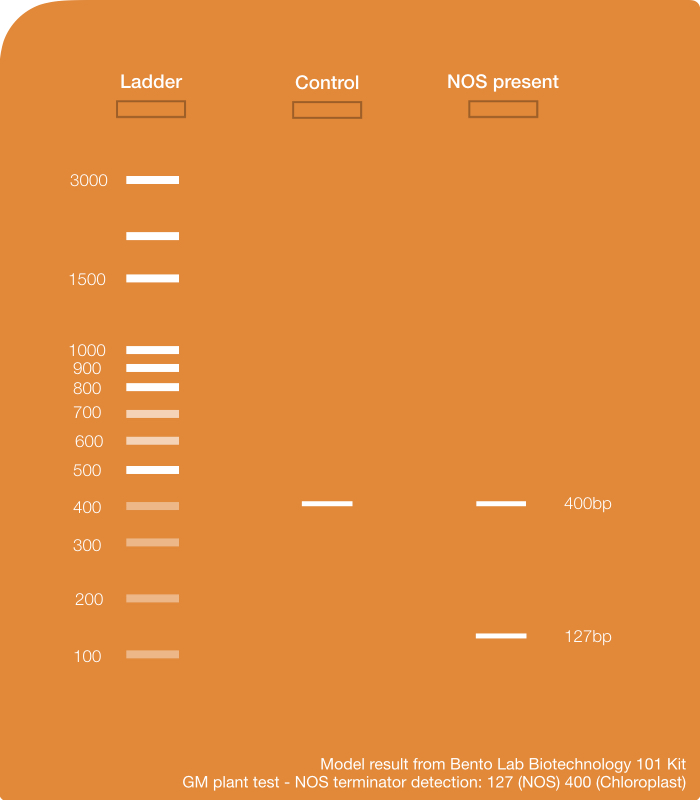Overview
What are the possible results for this experiment?
There are two possible results. If the PCR reaction works, we should observe at least one DNA band: the control sequence, the chloroplast DNA. If the plant has been genetically modified using the Agrobacterium tumefaciens technique, then we should see the chloroplast DNA and a band for the NOS terminator.
- Chloroplast: the PCR reaction worked, and there is plant DNA present
- NOS terminator: There is a copy of the NOS terminator in the sample, which means it has been genetically modified using the Agrobacterium tumefaciens technique.



